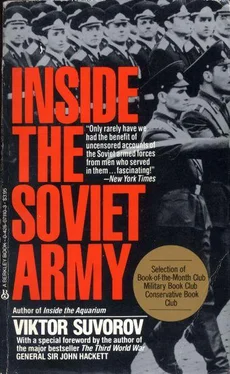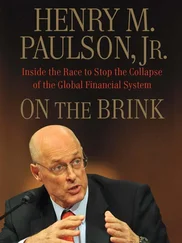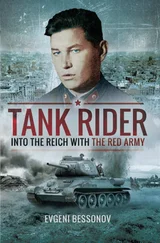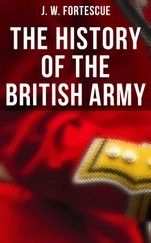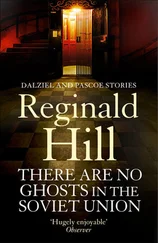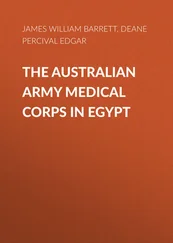4
In addition to such elementary military logic, there are political and economic reasons which would quite simply compel the Soviet command to make use of the overwhelming proportion of its nuclear armoury within the first few minutes of a war.
From the political point of view, the turning point must be reached within the first few minutes. What alternative could there be? In peacetime Soviet soldiers desert to the West by the hundred, their sailors jump off ships in Western ports, their pilots try to break through the West's anti-aircraft defences in their aircraft. Even in peacetime, the problems involved in keeping the population in chains are almost insoluble. The problems are already as acute as this when no more than a few thousand of the most trusted Soviet citizens have even a theoretical chance of escaping. In wartime tens of millions of soldiers would have an opportunity to desert-and they would take it! In order to prevent this, every soldier must realise quite clearly that, from the very first moments of a war, there is no sanctuary for him at the other side of the nuclear desert. Otherwise the whole Communist house of cards will collapse.
From an economic point of view, too, the war must be as short as possible. Socialism is unable to feed itself from its own resources. The Soviet variety is no exception to this general rule. Before the revolution, Russia, Poland, Estonia, Lithuania, and Latvia all exported foodstuffs. Nowadays they have not enough reserves to hold out from one harvest to the next. Yet shortage of food leads very quickly to manifestations of discontent, to food-riots and to revolution. Remember what happened in Novocherkassk in 1962, throughout the Soviet Union in 1964 and in Poland in 1970 and 1980. If socialism is unable to feed itself in peacetime, when the whole army is used to bring in the harvest, what will happen when the whole army is thrown into battle and when all the men and vehicles at present used for agriculture are mobilised for war?
For these reasons, the Communists are forced to plan any adventures they have in mind for the second part of the year, for the period when the harvest has already been brought in, and to try to finish them as quickly as possible. Before the next season for work in the fields comes round.
1
Soviet generals believe, quite correctly, that the best kind of defensive operation is an offensive. Accordingly, no practical or theoretical work on purely defensive operations is carried out at Army level or higher. In order that they should take the offensive, Soviet generals are taught how to attack. In order that they should defend themselves successfully, they are also taught how to attack. Therefore, when we talk of a large-scale operation-one conducted by a Front or a Strategic Direction-we can talk only of an offensive.
The philosophy behind the offensive is simple. It is easy to tear up a pack of cards if you take them one by one. If you put a dozen cards together it is very difficult to tear them up. If you try to tear up the whole pack at once you will be unsuccessful: you will not be able to tear them all up, and, furthermore, not a single card in the pack will be torn. Similarly, Soviet generals attack only with enormous masses of troops, using their cards only as a whole pack. In this way, the pack protects the cards which make it up.
Observing this principle of concentration of resources, in any future war the Soviet Army will only carry out operations by single Fronts in certain isolated sectors. In most cases it will carry out strategic operations-that is to say operations by groups of Fronts working together in the same sector.
2
The scenario for a strategic offensive operation is a standard one, in all cases. Let us take the Western Strategic Direction as an example. We already know that this has a minimum of three Fronts in its first echelon, one more in its second echelon, and a Group of Tank Armies in its third. The Baltic Fleet operates on its flank. Each of its Fronts has one Tank Army, one Air Army and two All-Arms Armies. In addition, the Commander-in-Chief has at his disposal a Corps from the Strategic Rocket Forces, a Corps from the Long-Range Air Force, three airborne divisions and the entire forces of Military Transport Aviation. The rear areas of the Strategic Direction are protected by three Armies from the National Air Defence Forces. A strategic offensive is divided into five stages:
The first stage , or initial nuclear strike, lasts for half an hour. Taking part in this strike are all the rocket formations which can be used at that stage, including the Corps from the Strategic Rocket Forces, the rocket brigades of the Fronts and Armies, the rocket battalions of the first division echelon and all the nuclear artillery which has reached the forward edge of the battle area. The initial nuclear strike has as its targets:
Command posts and command centres, administrative and political centres, lines of communication and communications centres-in other words, the brain and nerve-centres of a state and of its armies.
Rocket bases, stores for nuclear weapons, bases for nuclear submarines and for bomber aircraft. These targets must be knocked out in order to reduce Soviet losses at the hands of the enemy to the absolute minimum.
Airfields, anti-aircraft positions, radar stations, to ensure the success of the offensive breaks in the enemy's defenses, must be made for Soviet aircraft. The main groupings of the enemy's forces. Why fight them if they can be destroyed before a battle can begin?
In addition to the forces directly under the command of the C-in-C of the Strategic Direction, units of the Strategic Rocket Forces will also play a supporting role in the initial nuclear strike. These will concern themselves in particular with attacks on the enemy's principal ports, in order to prevent the enemy from bringing up reinforcements and in order to isolate the European continent.
Soviet generals consider, with good reason, that an initial nuclear strike must be unexpected, of short duration and of the greatest possible intensity. If it is delayed by as much as an hour, the situation of the Soviet Union will deteriorate sharply. Many of the enemy's fighting units may move from their permanent locations, his aircraft may be dispersed on to motorways; divisions of his land forces may leave their barracks, his senior leaders may move, with their cabinets, to underground shelters or to air-borne command posts and the task of annihilating them will become extremely difficult, if not impossible. This is why the maximum possible number of nuclear weapons will be used to deliver an initial nuclear strike.
The second stage follows immediately upon the first. It lasts between 90 and 120 minutes. It consists of a mass air attack by the Air Armies of all the Fronts and by all the Long-Range Air Force units at the disposal of the C-in-C of the Strategic Direction.
This attack is carried out as a series of waves. The first wave consists of all the available reconnaissance aircraft-not only those of the reconnaissance regiments but also the squadrons of fighters and fighter bombers which have been trained in reconnaissance. In all, more than a thousand reconnaissance aircraft from the Strategic Direction will join this wave; they will be assisted by several hundred pilotless reconnaissance aircraft. The primary tasks of the aircraft in this wave are to assess the effectiveness of the initial nuclear strike and to identify any objectives which have not been destroyed.
Immediately behind these aircraft comes the main wave, made up of all the Air Armies and Corps. Nuclear weapons are carried by those aircraft whose crews have been trained to deliver a nuclear strike. The targets of this wave are in the same categories as those of the rockets which delivered the initial nuclear attack. But, unlike the rockets, these aircraft attack mobile rather than stationary targets. They follow up after the rockets, finishing off whatever the latter were unable to destroy. Among the first of their mobile targets are: tank columns which have managed to leave their barracks, groups of aircraft which have succeeded in taking off from their permanent airfields and in reaching dispersal points on motorways, and mobile anti-aircraft weapons.
Читать дальше
